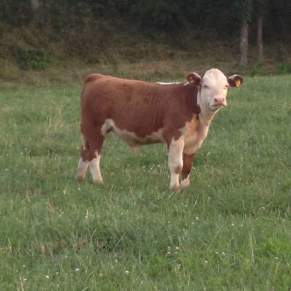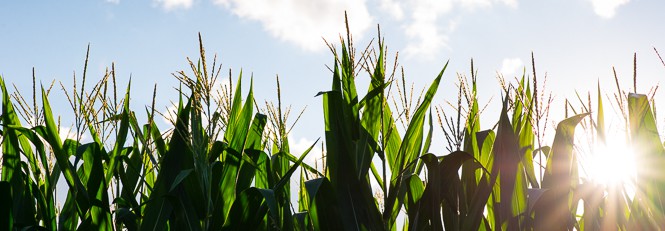
One of the first lessons I remember learning in life was hard work will pay off in due time. This lesson is far from the front of my mind during many activities. Whether it be working under the blazing summer sun putting up the third cutting alfalfa or making my way to the barn in the blowing snow to check on a soon to calve cow. With all of the day to day work involved in taking care of cattle, there always seems to be a reminder of the rewards we reap for dedicating our lives to livestock.
Calving Season
Calving season is without a doubt my favorite time around the farm. With that being said it is also a time that presents an abundance of work and sleepless nights. A lot of people might mistake this time of year as just being the time when all the cute cuddly calves are birthed and life is good. While that might be true in an ideal situation, calving always presents us with countless challenges. A few weeks prior to the first due dates within the herd comes the onset of the nightly ritual of checking cows. At first the energy is high and the anticipation of finding the first calf builds nightly as udders begin to tighten up. As the week wears on the energy levels drop and you begin to wonder if the due dates are true. About the time when you think you messed up your dates or something went wrong during breeding season a quick glance across the lot yields the first of hopefully many calves to come.
The first calf on the ground marks the onset of another calving ritual; calf-hood vaccinations. Taking care of newborn calves is a crucial step in ensuring the productivity of the calf long into its life. With most new mothers this is a rather routine step in the calving process, but there will always be some that just aren’t too sure about you messing with their precious calf. Walking up to the first calf of the season without fail, always puts butterflies in my stomach. Will it be a heifer? A bull? How well will it be marked? The best analogy I can think of for all the questions running through my mind comes from Forest Gump “Life is like a box of chocolates, you never know what you’re going to get”. All of the nerves subside as you kneel down beside the next generation of the herd. Its time to make sure the calf gets off on the right foot. With the shots also comes the calf’s permanent herd ID number on a nice, new bright orange and black ear tag. If all goes well momma and calf are then left to be and the wait for calf number two begins.
As more calves hit the ground checking and vaccinating becomes routine and second nature. While late night checks and dealing with complicated births are not ideal for getting an adequate amount of sleep nightly, I would not change a thing about it. With more calves on the ground keeping an eye on the mother’s nutrition becomes the next item of business. When cows start lactating it puts a large strain on their bodies and keeping up with her nutritional demands is important for allowing her to raise the calf to the best of her ability. To maintain or change intake levels it might require sorting off the cows that have calved in order to feed them differently from their yet to calve herd mates.
Breeding Season
Breeding season for us typically begins the last part of April in order to calve the bulk of our cows in February and March. In our herd we implement the advantages of artificial insemination, with this comes a bit more work than just turning a bull out with cows. In our herd it is not uncommon to breed cows to five or more different bulls. For me breeding decisions are constantly on my mind and in essence begin a year before the breeding will occur. In a years time I will look at countless bulls as potential candidates to breed cows to. With this an ever pressing question is on my mind, whether to go with old and proven or young and untested. As a young producer both options have their strengths and weaknesses. A bull that is old and proven should yield you a good predictable calf crop but many other producers will have comparable calves on the ground. Where as using a young unproven bull will in simple terms make you look like a shear genius or a total idiot.
The weeks leading up to breeding are a little nerve racking to say the least. Cows must receive a round of pre-breeding vaccines to protect against viruses that can negatively influence pregnancy rates. Along with getting cows ready, the quality of the next year’s calf crop relies a big part on the bulls I have chosen. As the time nears it never fails I always change my mind on which bull I want to use on a cow or two, when taking into consideration the calf they just had. But for the most part I trust my gut and go with my original decisions.
Spring Turnout
With the onset of spring marks the beginning of the growing season for cool season forages in the pastures. By mid May hopefully all the cows have went through one round of artificial insemination and are ready to be turned out onto these rich pastures. The joy of opening the gate that separates the luscious pasture and the lot where cows have stayed all winter long is a sweet moment. Cows on fresh pasture is a sight that I love to see, not only have I made it through another calving and breeding season, but daily chores are greatly reduced. The daily routine now includes checking fence, water tanks, mineral feeders, and making sure the herd bull is doing his job.
Summer
Summer around the farm is full of jobs such as baling hay for the upcoming winter, rotating pastures, and keeping an eye on the health of the herd. Putting up hay can be a dreadful job if the weather and or heat doesn’t cooperate. That being said it is still a job I enjoy and find rather relaxing. Rotating pastures is important to utilize the pastures effectively. Grazing a pasture too short will stunt it’s regrowth and limit its usefulness the remainder of the year, but under grazing a pasture is basically the same as wasting feed in the winter. Between these tasks calves must be vaccinated and weaned from their mothers. This process normally takes calves two trips thru the chute and patience for mothers reluctant to let their offspring go.
Once calves are weaned they go into a dry lot to get started on feed and are soon separated by sex to feed each more effectively. It is at this point when we can start to get an idea of what the calves really are and which heifers will potentially be kept as replacements for the herd. These heifers that we like are sorted off and will be started on a nutrition plan that will prepare them for entering production. The balance of the calves are either sold as feeder calves or kept for us to finish depending on the current markets.

Fall
Sale season. To others fall is the time of year for corn harvest and forests coming to life with fall colors, but to me fall means one thing, sale season. During fall I will travel on average to 10-15 production sales. There are few things I find more relaxing than viewing cattle and listening to an auctioneer’s chant. While traveling to sales is one of my favorite pastimes, it is a rather stressful time for my banker, but that is a story for another time.
Winter
By now cows are brought up from their fall pasture and feeding begins. Feeding cows over the winter is to ensure cows have proper nutrition to nourish the fetuses they are carrying and they themselves be in proper body condition come calving season. Cold and snow are challenges we always face, whether it be over a foot of snow or waterers freezing up from the bitter cold temperatures. There are always chores to be done during this time. That being said the countdown to February is on, which can only mean one thing, calving season.
Hello my name is Keaton Dobbs. I am from southern Illinois and I am currently a senior at Western Illinois University. I will be graduating with a major in Ag business and minor in animal science. My family and I currently run a herd of around 20 polled Hereford cows. Livestock have always played an important role in my life, when not working with our herd I work for several different cattle producers around the area.


I would definitely agree with you, with calving season to be my favorite time of the year. Many do not understand how much hard work and dedication it takes to manage a cow operation but it all pays off as soon as calving season starts and we get to see those four little legs stand up and run around, with their tails straight up in the air.
LikeLike